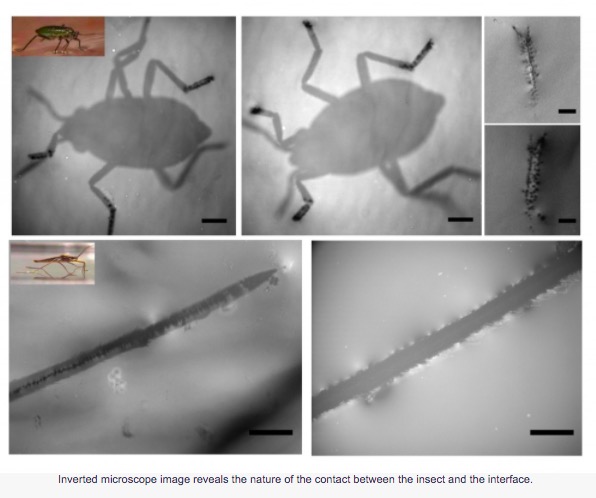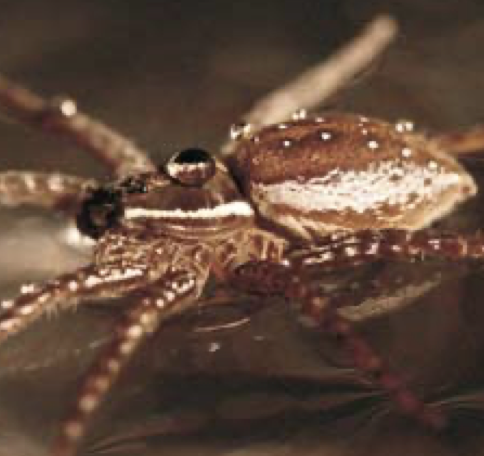
We develop a coherent view of the form and function of the integument of water-walking insects and spiders by reviewing biological work on the subject in light of recent advances in surface science. Particular attention is given to understanding the complex nature of the interaction between water-walking arthropods and the air–water surface. We begin with a discussion of the fundamental principles of surface tension and the wetting of a solid by a fluid. These basic concepts are applied to rationalize the form of various body parts of water-walking arthropods according to their function. Particular attention is given to the influence of surface roughness on water-repellency, a critical feature of water-walkers that enables them to avoid entrapment at the interface, survive the impact of raindrops and breathe if submerged. The dynamic roles of specific surface features in thrust generation, drag reduction and anchoring on the free surface are considered. New imaging techniques that promise important insights into this class of problems are discussed. Finally, we highlight the interplay between the biology, physics and engineering communities responsible for the rapid recent advances in the biomimetic design of smart, water- repellent surfaces.
See paper: Bush, Hu & Prakash (2008).
